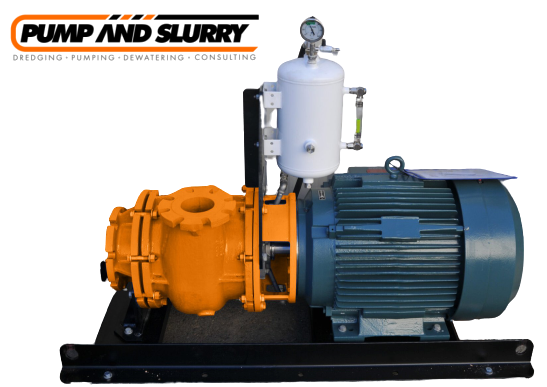If you’ve ever pumped slurry, you know that it can be one of the most challenging fluids to move. It’s abrasive, thick, sometimes corrosive, and contains high amounts of solids. No doubt about it, slurry is tough on pumps. But the more you understand about what you’re pumping, the better your pump selection becomes, setting you up for longer mean time between failure.
Selecting the right pump for slurries is critical to get the most bang for your buck. Basic pump components, such as the impeller size and design, material of construction, and discharge configurations must be considered to ensure the pump will hold up against the wear caused by an abrasive slurry. Slurry pumps are generally larger in size when compared to low-viscosity liquid pumps and usually require more horsepower to operate because they’re less efficient. Bearings and shafts must be more rugged and rigid as well.
Many types of pumps are used for pumping slurries, but the most common slurry pump is the centrifugal slurry pump (pictured above). The centrifugal slurry pump uses the centrifugal force generated by a rotating impeller to impact kinetic energy to the slurry, similar to how a water-like liquid would move through a standard centrifugal pump.
Steps to Select a Slurry Pump:
1. Determine the flow rate
To size and select a pump, we first determine the flow rate. In an industrial setting, the flow rate will often depend on the production level of the plant. Selecting the right flow rate may be as simple as determining that it takes 100 gpm (6.3 L/s) to fill a tank in a reasonable amount of time or the flow rate may depend on some interaction between processes that needs to be carefully analyzed.
2. Determine the static head
This a matter of taking measurements of the height between the suction tank fluid surface and the discharge pipe end height or the discharge tank fluid surface elevation.
3. Determine the friction head
The friction head depends on the flow rate, the pipe size and the pipe length. This is calculated from the values in the tables presented here (see Table 1). For fluids different than water the viscosity will be an important factor and Table 1 is not applicable.
4. Calculate the total head
The total head is the sum of the static head (remember that the static head can be positive or negative) and the friction head.
5. Select the pump
Pump selection is based using the total head and flow required as well as suitability to the application.
It should go without saying that pumping slurry isn’t quite as easy as pumping water. Depending on the type of slurry, there are many variables that go into selecting the proper pump for slurry. There is no formula or cut-and-dry answer as to what the optimal slurry pump design is. You must combine knowledge and application specifics into selecting the ideal slurry pump. Let’s talk about how slurry pumps are different than standard water pumps and how to narrow down your choices.
Metal slurry pump casings are usually made of hard alloys to resist erosion caused by the increased pressure and circulation. Sometimes wear-resistant steel is used on pump casings so that the pump can be welded if in need of repair.




